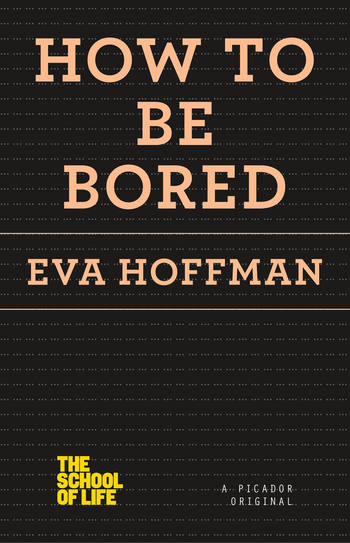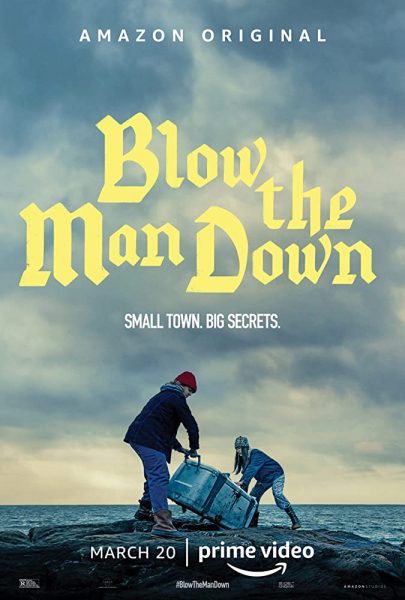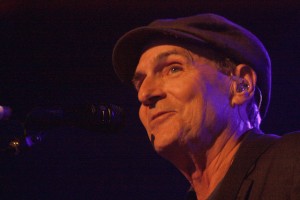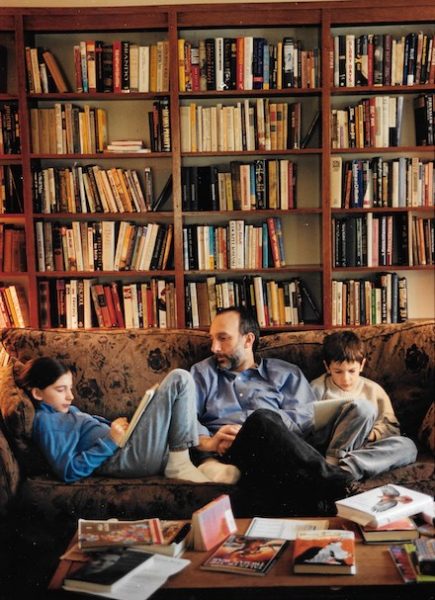(HUDSON, N.Y., March 26, 2020) — Concerts are cancelled. Movie theaters are closed. Performing arts venues are shuttered. What’s a culture vulture to do?
While nothing beats live performance or seeing movies on a big screen, we’re all learning to make do with the new normal: staying at home and consuming our culture via streaming on digital devices or engaging with such old-fashioned methods as reading print books and listening to the radio.
Film Review: Blow the Man Down
Blow the Man Down is a quirky, indie film that I’ve seen described variously as a black comedy and a regional noir. I like both those genres, and I suppose Blow the Man Down combines a bit of both, along with a hefty dose of feminism and New England gothic (think Stephen King, but without the supernatural). Now being streamed on Prime Video, the film – directed by Bridget Savage Cole and Danielle Krudy — has no real stars to speak of, although most viewers will recognize Margo Martindale, who has enjoyed a great run of creative and commercial success over the past five years or so.
The story centers on two young adult sisters in the wake of their mother’s death. A somewhat inexplicable crime happens, which plunges the sisters deep into their town’s secret history, the sweep of which includes their own deceased mother. As it turns out, things were never what they seemed to be in the fictional fishing village of Easter Cove, in a film that refreshingly features women in almost all the significant (and insignificant) roles.
The Boston Globe’s Ty Burr called Blow the Man Down “Fargo with lobsters,” which isn’t too far off the mark. It reaches for something more mythic – it’s very Shakespearean, or even Greek – and if it doesn’t quite grasp it, it’s still an enjoyable thriller.
But the ending! What the hell happened? Let me know if you can figure it out.
New Playlist: Mourning the Apocalypse
I previously told you about my Soundtrack for the Apocalypse playlist on Spotify. That one was filled with urgent, punk-fueled songs by artists including the Sex Pistols, Talking Heads, David Bowie, Public Enemy, and the Rolling Stones. In its wake, I made another one called Mourning the Apocalypse with a very different vibe – more somber and reflective, more poignant and spiritual. It includes numbers by artists including Joni Mitchell, Patti Smith, Peter Gabriel, Dire Straits, Bob Dylan, Leonard Cohen, Roxy Music, and Emmylou Harris. And again, please be sure to listen in shuffle mode.
 How to Be Bored by Eva Hoffman
How to Be Bored by Eva Hoffman
Don’t let the provocative title of Eva Hoffman’s How to Be Bored fool you. Hoffman’s book is not a how-to for being bored, but rather a how-to of how to be when one finds oneself being bored. Or, more precisely, a manifesto in favor of “boredom” as opposed to its opposite state – hyperactivity – in order to achieve a truly self-reflective state. Rather than how to be active and productive, Hoffman explicates the importance of being in nothingness, or, as a Buddhist (or George Harrison) might say, how to “be here now.”
Part of the “School of Life” series curated by Alain de Botton and published by Picador (in 2016), Hoffman’s is a wide-ranging exploration of the philosophy and theory of self, without being overly philosophical or theoretical. For sure, she talks extensively about Freud, Camus, Sartre, and Virginia Woolf, in the way of any smart cultural critic or essayist. The daughter of Holocaust survivors, Hoffman is an old-style public intellectual, whose wide range of work includes novels, memoir, history, and essays. She is not fond of what digital devices and online content have done to our minds and to our attention spans, a complaint which in the wrong hands or at the wrong time can seem churlish, but which is the perfect prescription right now, when the very foundation of our lives and the way we live them is being challenged.
“After a while, incessant activity can leave us feeling depleted and oddly undernourished, as if the experiences we have been through have not taken root, or become part of ourselves,” writes Hoffman. If that statement resonates with you at all, this book is for you.
Barrington Stage Company’s ‘Not Ready for Prime Time Zoomers’
Barrington Stage Company in Pittsfield, Mass., has posted the first in what I sure hope will be a continuing series called “Not Ready for Prime Time Zoomers.” The unintentionally meta first episode, featuring BSC mainstays Julianne Boyd, Debra Jo Rupp, and Mark H. Dold, could well have been scripted by Samuel Beckett. Encore!
Streaming Performing Arts Online
Dozens if not hundreds of artists, venues, and organizations continue to make archival and some live events available online for streaming.
Fans of Chris Thile’s live radio program Live From Here can rejoice: Thile is now posting new videos of artists captured Live From Home, including Rachael Price covering Cyndi Lauper’s “Time After Time” and Thile himself performing a gorgeous version of Wilco’s “Radio Cure.”
In “Toward a Joyful Self-Quarantine: Find the Right Artist and Go to Town. (Virtually),” my friend and colleague Ed Siegel writes eloquently about taking this opportunity to do a complete immersion in a favorite artist or artists. Ed is currently making his way through all of Ruth Rendell’s psychological crime fiction and all of Miles Davis’s “multifaceted” jazz. Ed writes, “When you listen to Beethoven’s ‘Eroica,’ watch the resurrection of the Star Child in ‘2001’ or — insert your favorite book/movie/record here — the world is a different and better place, even in self-quarantine.” Amen to that.
New York magazine compiled a list of livestreaming events – including concerts by Miley Cyrus, Diplo, Ben Gibbard (Death Cab for Cutie), Garth Brooks, and Margo Price.
The New York Times offered a comprehensive listing of recommended things to watch, read, and listen to during your self-quarantine.
How about streaming an hour-and-20-minute concert by The Band in Asbury Park, N.J., in July 1976 – just a few months before the group called it quits with The Last Waltz.
But I know what you really want right now: a new, hourlong concert by James Taylor.
As much as I love my own playlists, a lot of the time I prefer something quieter and more reflective, while still being artful and surprising. In other words, I don’t want bland ambient sounds or “chill” music – I want music suited for quarantine and its consequent activities: reading, eating, even napping. I’ve always been a big fan of Spotify’s “Minimalism” playlist, and it often serves that role, but some of the pieces in the list can be too noisy or harsh or abrupt for the mood I am trying to create. As it turns out, Spotify has put together a pretty terrific 50-song playlist called “Quiet Music,” a subset of its Classical genre, featuring music by composers including Gyorgy Kurtag, Arvo Part, Charles Ives, Toru Takemitsu, Brian Eno, Pauline Oliveros, Henri Dutilleux, Stockhausen, John Cage, and Charles Wuorinen. Spotify describes it thusly: “50 contemporary classical pieces that, under their extremely slow and spare surface, evoke a colossal sense of space and time, where intimate beauty arises in unexpected moments and forms.” This playlist has been my go-to this past week, and I expect I will be returning to it for weeks to come.
The Quarantine Diaries
I’ve been generating a series of essays and blogposts under the rubric “The Quarantine Diaries.” Quarantine Diary #1 is “My Visit to the Pharmacy.” Quarantine Diary #2 is “Morning Has Not Broken,” the complete text of which appears in The Forward. Quarantine Diary #3 is “On Schooling at Home During a Pandemic.” By the time you read this, there may well be more.



